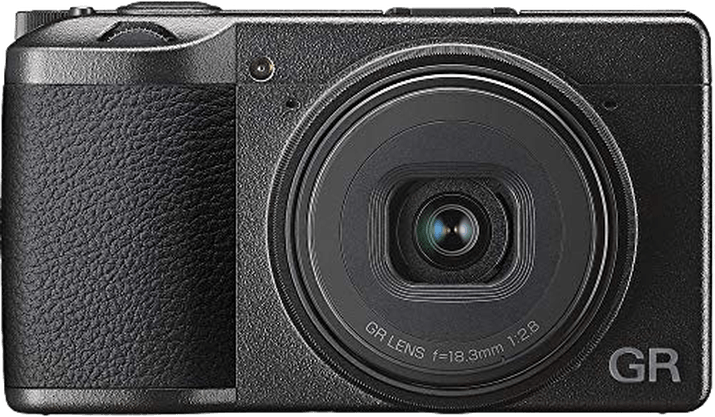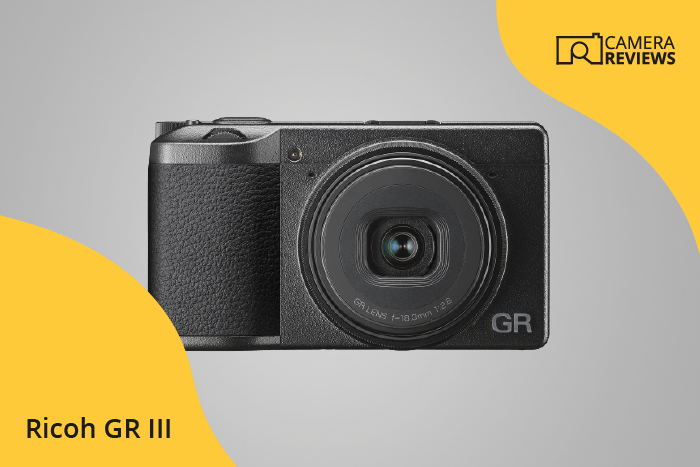Ricoh GR III Specs and Scores

The Ricoh GR III earns a score of 66/100, showcasing its decent performance as a compact camera. Announced on September 25, 2018, and released later that year, it initially retailed at $899. This camera measures 109 x 62 x 33mm and weighs 257g or 0.57lbs, which is suitable for on-the-go photography.
In today’s market, the Ricoh GR III holds its own with its specifications, providing a reliable option for photographers seeking a compact and user-friendly camera. Its features and size make it a competitive choice for capturing everyday moments.
Ricoh GR III Overview and Optics
The optics of the Ricoh GR III receive a score of 68/100. This camera features a 24-megapixel CMOS sensor, coupled with a GR Engine 6 processor. It has a shooting speed of 4 frames per second and a DXOMARK sensor score of 76. The sensor size is APS-C, providing good image quality in various lighting conditions.
A fixed lens mount is present, meaning lens changes are not possible. Despite this limitation, the camera offers image stabilization, ensuring sharp, steady shots even in challenging situations. The aspect ratio is 3:2, a standard format for most cameras.
In the current market, the Ricoh GR III holds its ground with its specifications, especially for those seeking a compact camera with quality optics. The image stabilization and solid sensor performance make it a reliable choice for photographers who prioritize simplicity and portability.
Ricoh GR III Video Performance
The Ricoh GR III receives a video score of 70 out of 100. This camera offers Full HD video recording with a maximum resolution of 1920 x 1080 pixels. The frame rate can reach up to 60fps, which allows for smooth motion in video footage. Additionally, the GR III includes built-in time-lapse functionality for creative video production.
Comparing these specifications to other cameras in today’s market, the Ricoh GR III’s video capabilities are decent but not exceptional. Many modern cameras now offer 4K video resolution, which provides higher detail and clarity compared to Full HD. However, the GR III’s 60fps frame rate and time-lapse feature remain competitive and useful for various video applications.
The Ricoh GR III’s video features cater to casual videographers and photographers who occasionally shoot video. While it may not be the top choice for professional video production, it remains a solid option for users who value simplicity and ease of use in a compact camera.
Ricoh GR III Features and Benefits
The Ricoh GR III receives a feature score of 70 out of 100, showcasing its competitive position in the market. The camera boasts a 3-inch touchscreen with a screen resolution of 1,037,000 dots, providing clear and vibrant image previews. However, it lacks a flip screen, limiting its versatility for certain shooting angles and selfie enthusiasts.
Despite not having GPS capabilities, the Ricoh GR III compensates with its built-in WIFI and Bluetooth features, simplifying image transfers and remote control functionality. These specifications allow users to easily share their captured moments with friends and family, or upload them to social media platforms.
Taking into account the mentioned features, the Ricoh GR III holds its ground as a reliable camera in today’s market. Its combination of a high-resolution touchscreen and wireless connectivity options make it a worthy contender for photography enthusiasts seeking a compact and user-friendly option.
Ricoh GR III Storage and Battery
The Ricoh GR III scores a 27/100 in storage and battery. The camera has one memory card slot, accepting SD, SDHC, and SDXC cards, with UHS-I compatibility. It also offers internal storage. In today’s market, having only one memory card slot is common in compact cameras, but may not be ideal for professional photographers who require backup storage.
The battery life of the Ricoh GR III is 200 shots, using a DB-110 battery. This capacity is lower than many modern cameras, which often provide longer battery life for extended shooting sessions. However, the GR III does support USB charging, allowing users to recharge the battery on-the-go.
Considering these specifications, the Ricoh GR III’s storage and battery capabilities are somewhat limited compared to other cameras currently available. However, for casual photographers or those who prioritize portability, the GR III may still be a suitable choice.
Ricoh GR III Alternatives
Do you want to know how the Ricoh GR III compares to its competitors? Have a look at the most popular comparisons for this camera below:
- Ricoh GR III vs GR IIIx
- Fujifilm X100V vs Ricoh GR III
- Panasonic Lumix DC-GX800 vs Ricoh GR III
- Canon PowerShot G7 X Mark III vs Ricoh GR III
- Ricoh GR III vs Sony ZV-E10
- Canon PowerShot G1 X Mark III vs Ricoh GR III
Ricoh GR III FAQ
Does the Ricoh GR III Have Built-in Image Stabilization?
Yes, the Ricoh GR III features a built-in 3-axis image stabilization system, which helps reduce camera shake and produce sharper images in various shooting conditions.
Does the Ricoh GR III Support 4K Video Recording?
No, the Ricoh GR III does not support 4K video recording. The maximum video resolution it offers is Full HD 1080p at 60 frames per second.
What Size Sensor Does The Ricoh GR III Have?
The Ricoh GR III is equipped with an APS-C sized sensor, which is larger than the sensors found in most compact cameras and provides better image quality and low-light performance.
Does the Ricoh GR III Have a Dual Memory Card Slot?
No, the Ricoh GR III has a single SD card slot for memory storage, which supports SD, SDHC, and SDXC cards, including UHS-I cards.
Does the Ricoh GR III Have a Touch Screen?
Yes, the Ricoh GR III features a 3-inch touch-sensitive LCD screen, which enables touch focus, touch shutter, and easy navigation through menus and settings.
Does the Ricoh GR III Have Wi-Fi and Bluetooth?
Yes, the Ricoh GR III includes both Wi-Fi and Bluetooth connectivity options, allowing for easy image transfer, remote control, and sharing capabilities with compatible devices.
Does the Ricoh GR III Have GPS?
No, the Ricoh GR III does not have a built-in GPS module. However, you can use the camera’s Bluetooth connectivity to sync location data from your smartphone.
Is the Ricoh GR III Weather Sealed?
No, the Ricoh GR III is not weather sealed. While it is built with a sturdy magnesium alloy body, it is not designed to withstand harsh weather conditions or heavy rain.
Does the Ricoh GR III Have a Built-in Flash?
No, the Ricoh GR III does not have a built-in flash. However, it does have a hot shoe for attaching an external flash unit if needed.

